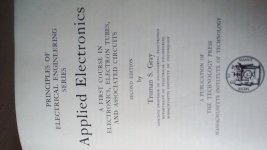Just thinking out loud for discussion.
It should be possible to make an analogue 1Khz oscilator using a voltage controlled oscilator with a higher frequency (say 10MHz) phase correction, mixing the two.
A couple of ways to quantify phase differences (one such as digital multi phase comparison) could then output a +/- digital encoded with a dac to control the adjustment of the VCO generating the 1KHz signal. A filter then removes the higher frequency prior to output.
That multiphase digital comparison (square wave) could then simply create sixteen zeros and sixteen 1s for in phase but variation of phase would end up with more zeros or ones, which could change the voltage using logic to the VCO.
It should (idealistically) correct at a resolution but I suspect that this it may cause distortion as the VCO shifts causing harmonics?
Thinking further in terms in an analogue form, a voltage difference between the two phases of the two frequencies (notched for low freq) could be used input an error voltage into a fontana bridge resulting in a current injection to low frequency oscilator to correct the error (V vs I phase may scupper this idea).
Maybe the idea works better with the LF correcting the HF production perhaps?
Thoughts?
It should be possible to make an analogue 1Khz oscilator using a voltage controlled oscilator with a higher frequency (say 10MHz) phase correction, mixing the two.
A couple of ways to quantify phase differences (one such as digital multi phase comparison) could then output a +/- digital encoded with a dac to control the adjustment of the VCO generating the 1KHz signal. A filter then removes the higher frequency prior to output.
That multiphase digital comparison (square wave) could then simply create sixteen zeros and sixteen 1s for in phase but variation of phase would end up with more zeros or ones, which could change the voltage using logic to the VCO.
It should (idealistically) correct at a resolution but I suspect that this it may cause distortion as the VCO shifts causing harmonics?
Thinking further in terms in an analogue form, a voltage difference between the two phases of the two frequencies (notched for low freq) could be used input an error voltage into a fontana bridge resulting in a current injection to low frequency oscilator to correct the error (V vs I phase may scupper this idea).
Maybe the idea works better with the LF correcting the HF production perhaps?
Thoughts?
Good point, images and harmonic locks etc.
Only other way i suspect is using delay lines of the original signal i suppose.
Only other way i suspect is using delay lines of the original signal i suppose.
The issue is simple. Suppose you want a 1KHz signal; thus you may have, as example, a 10,000,000Hz signal and another, say, 10,001,000Hz. The output value is obvious.
Now you need a 10KHz signal. Thus you move the dial of the variable to 10,010,000 Hz. But this signal will not pass though the same filter as the previous, so you will get it severelly attenuated respect to those of 1KHz. But if you move the filter to 10KHz, when returning to 1KHz you will have lots of thrash signals plus the 1KHz one. So it is needed a tuned filter always near the output frequency. This tracking was very difficult in previous arts.
Now you need a 10KHz signal. Thus you move the dial of the variable to 10,010,000 Hz. But this signal will not pass though the same filter as the previous, so you will get it severelly attenuated respect to those of 1KHz. But if you move the filter to 10KHz, when returning to 1KHz you will have lots of thrash signals plus the 1KHz one. So it is needed a tuned filter always near the output frequency. This tracking was very difficult in previous arts.
Frequency synthesizers of yesterday used lots of tricks to overcome the various heterodyning issues.
You can certainly dig into the thousands of patents that have been filed to address the issues.
Heterodyning is a "virtuous" synthesis method, as it inherently reduces unwanted modulation products, leaving the output waveform cleaner than any of its ingredients, but it comes with issues.... most have been solved during the previous decades though, thus have a look at the abundant previous art before embarking yourself on a new? idea
You can certainly dig into the thousands of patents that have been filed to address the issues.
Heterodyning is a "virtuous" synthesis method, as it inherently reduces unwanted modulation products, leaving the output waveform cleaner than any of its ingredients, but it comes with issues.... most have been solved during the previous decades though, thus have a look at the abundant previous art before embarking yourself on a new? idea
This is how low distortion oscillators were made before Bill and Dave (and Mr Krohn and Mr Hite) changed everything in the 1950's https://bama.edebris.com/download/gr/1304b/1304-B Beat Freq Osc.pdf You don't need (or want) 10 MHz to do it. Its too hard to get the necessary stability.

